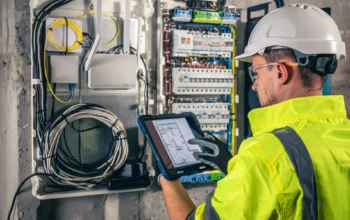Does your dog need to learn basic obedience training, or is struggling with specific behavioural issues? If yes, then you are in the right place. Obedience training is important ensuring that your dog is a well- behaved, responsive and safe companion.
To achieve this, you can learn to train your dog with the help of a behavioural dog trainer. These trainers have the expertise to help you train the dog safely and healthily.
So, you must be wondering what techniques they teach to help your dog become an obedient companion.
Here, we will share with you the techniques that are covered in basic obedience training.
Leash Walking
Teaching your dog to walk nicely on a leash is one of the most essential skills for a well-behaved pet. When your dog learns to walk calmly beside you, it makes outings more enjoyable and safer for both of you. To begin leash training, use treats or their favorite toy as motivation. Start by rewarding your dog for staying by your side without pulling on the leash. The key here is engagement—your dog should be focused on you, not distracted by surroundings.
As your dog gets better at walking calmly, increase the length of your walks and introduce distractions such as other dogs, people, or noisy environments. It’s important to remain consistent; if your dog starts pulling, stop walking until they return to your side. With time and patience, your dog will understand that pulling does not get them where they want to go. This technique not only creates a more enjoyable walking experience but also ensures that your dog stays safe, particularly near busy streets or unfamiliar areas.
Basic Commands
The backbone of any good dog basic obedience training program is teaching basic commands like “sit,” “stay,” “come,” and “down.” These simple yet essential commands provide the foundation for a well-behaved dog. Start with one command at a time and use positive reinforcement to encourage your dog when they respond correctly. For example, when you ask your dog to “sit,” and they do so, immediately reward them with praise or a treat.
One of the most important aspects of basic obedience is consistency. Practice these commands daily in different environments, so your dog learns to respond regardless of distractions. Regular repetition helps reinforce the behaviour, making it second nature to your dog. These commands form the basis of good communication between you and your dog and are crucial for their safety and your control in various situations.
Impulse Control
Impulse control is vital for your dog’s overall behaviour and well-being. It helps prevent common issues like jumping on guests, barking excessively, or running into dangerous situations. Techniques like “leave it” or “wait” teach your dog to pause and think before acting. This kind of training requires patience but pays off significantly.
Start with low-value distractions (such as a toy or a treat) and gradually introduce higher-value distractions, like food or other animals. Each time your dog ignores the distraction, reward them immediately. Impulse control ensures that your dog remains calm in exciting or challenging situations, making them more manageable and safer in public settings.
Behaviour Modification
Behaviour modification addresses specific issues such as aggression, barking, or fear-based reactions. The first step is identifying the root cause of the behaviour, whether it’s fear, anxiety, or excitement. Once you understand the cause, you can begin using targeted training techniques to modify the behaviour.
For instance, if your dog is aggressive toward strangers, you might gradually introduce them to new people in controlled environments, rewarding calm behaviour and redirecting aggressive tendencies. Over time, this positive reinforcement helps your dog associate strangers with good things, reducing their anxiety or fear.
E Collar Training
E-collar training is more advanced and is typically used for off-leash control or in cases where dogs need a higher level of reinforcement. The e-collar delivers a mild stimulus to the dog, helping reinforce commands from a distance. It’s important to use this tool under the guidance of a professional trainer to ensure it’s used humanely and effectively.
When used correctly, the e-collar can provide immediate feedback, allowing you to reinforce commands even when your dog is off-leash. This technique is particularly helpful for dogs that have mastered basic commands but need extra reinforcement to follow commands without the physical constraint of a leash.
Full Off-Leash Control
Once your dog has mastered basic commands and leash walking, you can progress to full off-leash control. This level of training is essential for dogs that will spend time in open spaces such as parks or on hiking trails. Start off-leash training in a safe, enclosed area where your dog can practice responding to commands without the risk of running off.
Gradually introduce more distractions, such as other dogs, people, or wildlife, and continue to reinforce their good behaviour with treats or praise. Full off-leash control ensures that your dog remains obedient, even in open or distracting environments. This level of training is crucial for their safety and allows you to enjoy more freedom with your dog in various settings.
Conclusion
Each of these obedience techniques—leash walking, basic commands, impulse control, behaviour modification, e-collar training, and off-leash control—plays a crucial role in shaping your dog into a well-behaved, safe, and happy companion. With consistent practice and positive reinforcement, you’ll be able to build a strong bond with your dog and enjoy stress-free outings together.




